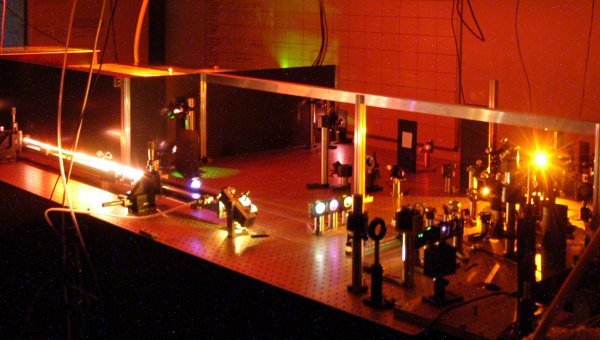
Scientists could be closer to understanding how photosynthetic molecules transport energy with such high efficiency thanks to a new optical experiment developed by researchers in the Ireland and the UK. The technique could also help researchers develop more efficient solar cells, say the researchers (Phys. Rev. Lett. 102 057402).
Perhaps the most important chemical reaction on Earth, photosynthesis allows plants to harness the Sun’s energy by converting carbon dioxide and water into carbohydrates. Gaining a better understanding of this efficient process is important to biologists and could point towards better technologies for harvesting solar energy.
“Photosynthesis is a good example of where nature transports energy efficiently from one place in a molecule to another. It’s this transfer process that we have been studying,” said Ian Mercer of University College Dublin, the lead author of this new study. “We know that electrons are the mediators of energy transport in molecules. What we don’t know is the design rules for how these electrons hand the energy on to each other.”
To study these rules, researchers had used various laser-based techniques to attempt to understand the complex interactions between electrons in molecules. Many are based on the principle of four-wave mixing, whereby three different laser beams interact with a sample to create a fourth beam. Common problems with these methods include degrading the sample by over-exposing it to laser light and the need for intensive computer processing.
We estimate that ARC is up to 1015 times faster than previous four-wave mixing approaches Ian Mercer, University College Dublin
The new method is called angle-resolved coherent (ARC) wave mixing and Mercer said “We estimate that ARC is up to 1015 times faster than previous four-wave mixing approaches for revealing coupled electrons”. “Our results are instantaneous snap-shots of energy being transported between electrons that give you a significant amount of information in parallel. No computer processing is required to form a map or to distinguish electron coupling mechanisms for isolated features” (Phys. Rev. Lett. 102 057402.)
A pulse of many colours
The starting point in the team’s ARC system is a femtosecond laser emitting millijoule pulse energies at kilohertz repetition rates. The emission is fed into a 1 m long hollow fibre filled with an inert gas which creates a very stable beam and pulses with a broad coherent bandwidth.
“The fibre takes a 30 fs pulse with a bandwidth of about 30 nm at 800 nm and spreads that out to cover 650–900 nm,” said Mercer. “What’s crucial is that these colours are all coherently related to each other, which allows us to probe a broad range of energy levels in the sample”. The fibre development was led by John Tisch and Jon Marangos at Imperial College London and the technology was subsequently used with the Rutherford Appleton Laboratory’s Astra laser.
The pulses then pass through a diffraction grating placed at the object point of a telescope (with the sample being at the image point), which generates four beams. Mercer and colleagues block one of the beams and mix the remaining three at the image point.
Instant picture
“This generates new light out of the sample at specific angles governed by conservation of momentum,” explained Mercer. “By putting a CCD camera at the right place, all of the angles go to different places on the camera. You get one instant picture, or map, that captures all of the different angles of light emission at the same time.”
The specific features present on the map allow the team to understand how the electrons in the molecule are interacting. “We spread out the map in a diagonal direction by dispersing the emission and then look at deviations from the diagonal,” commented Mercer. “For example, horizontal deviation of a feature from the diagonal tells you that electrons are strongly coupled with each other.”
In a proof-of-principle experiment, the researchers successfully probed a common photosynthetic protein called LH2. They are also now studying a polymer-based photovoltaic to see how the electrons inside the system are coupled. “Our technique is instantaneous,” concluded Mercer. “This opens up the opportunity to look at small volumes of high-value samples and to get your answer out in one laser pulse.”
Mercer said he is interested in hearing from anyone who would like to exploit the ARC technique to study energy transport in other systems.




